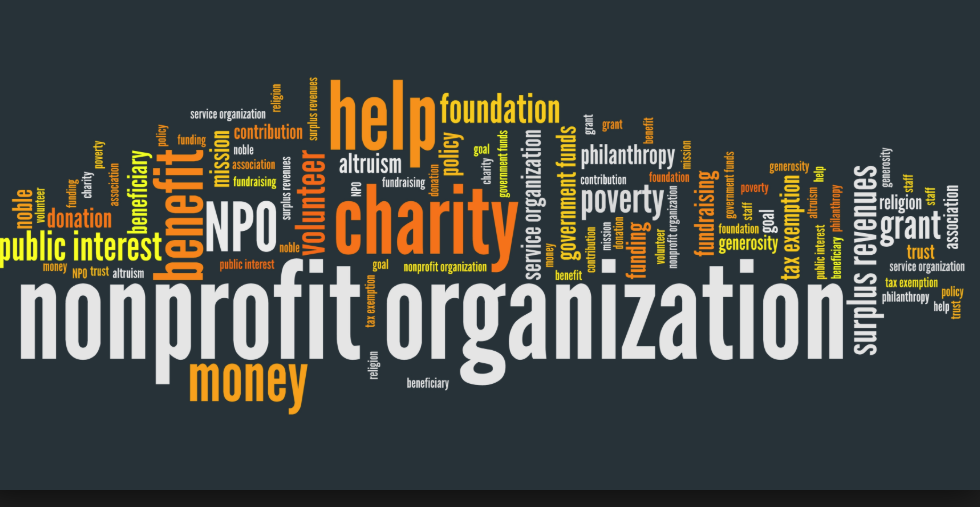The Importance of Cooperation and Partnership for a Nonprofit Agency in Maximizing Resources and Enhancing Neighborhood Interaction
In the realm of not-for-profit agencies, cooperation and partnership arise as important mechanisms for intensifying sources and fostering neighborhood involvement. These alliances not only improve program effectiveness yet also grow a much deeper feeling of community involvement and ownership.
Advantages of Collaboration

Furthermore, partnership fosters advancement by motivating the exchange of concepts and finest techniques. When companies work together, they can check out diverse perspectives, resulting in creative remedies that may not arise alone. This common analytical approach can inevitably boost service delivery and program outcomes.
In addition, collective efforts can boost neighborhood engagement. When nonprofits companion with one an additional, they can activate broader assistance from stakeholders, including volunteers, donors, and neighborhood members. This cumulative interaction not only raises exposure but additionally enhances the credibility of the participating companies.
Structure Strategic Partnerships
Cooperation among not-for-profit agencies often leads to the development of strategic partnerships, which are essential for making the most of influence and achieving common goals. These collaborations enable organizations to utilize each other's staminas, enhancing solution delivery and broadening outreach. By straightening missions and objectives, nonprofits can create a synergistic result that amplifies their reach and efficiency within the area.
Structure critical collaborations calls for cautious planning and shared understanding. Developing open lines of interaction promotes depend on, enabling partners to discuss duties, assumptions, and resources transparently.
Furthermore, clearly defined duties and roles are important for accountability and success. Defining the partnership through created contracts can provide a structure for partnership, describing the scope of job, performance metrics, and evaluation techniques. By fostering these critical alliances, not-for-profit firms can improve their capacity to attend to community demands, innovate remedies, and activate resources properly, eventually bring about a much more significant and lasting impact in the neighborhoods they offer.
Sharing Resources Effectively
How can not-for-profit agencies maximize their effect with effective resource sharing? By purposefully working together with various other organizations, nonprofits can improve their functional efficiency and prolong their reach within the area. Resource sharing includes merging various properties, including funds, personnel, competence, and centers, to address typical objectives much more properly.

Additionally, leveraging each other's strengths can foster advancement. By trading expertise and try this website ideal techniques, firms can boost service shipment and establish brand-new solutions to area obstacles. Reliable source sharing likewise cultivates a sense of unity, enhancing the idea that cooperation is necessary for attaining significant social impact.
Involving the Community
What strategies can not-for-profit firms employ to efficiently involve their areas? Firstly, establishing open lines of interaction is critical. Making use of different platforms, such as social media, e-newsletters, and neighborhood online forums, allows firms to distribute information, get comments, and foster discussion. This two-way interaction not only notifies the community concerning the company's mission and tasks however also welcomes input, making neighborhood participants feel valued and involved.
In addition, forming collaborations with local companies can enhance outreach initiatives. nonprofit agency. Collaborating with institutions, businesses, and other nonprofits can intensify resources and produce a more extensive assistance network, enabling joint efforts that reverberate with neighborhood demands
Additionally, organizing area events, workshops, and volunteer chances can facilitate deeper interaction. These activities produce a feeling of belonging and encourage energetic involvement, making it possible for individuals to add to the company's goals while developing partnerships with fellow community participants.
Determining Collective Success
Examining the performance of joint initiatives is crucial for nonprofit agencies seeking to optimize their influence. Gauging collective success includes establishing clear, quantifiable goals and using a range of metrics to examine performance. Key indicators may consist of the variety of collaborations created, resources shared, and the tangible outcomes attained with cooperation.
To effectively gauge success, nonprofits must execute a framework that integrates both qualitative and use this link measurable information. Surveys and interviews can provide understandings into stakeholder fulfillment and the perceived worth of collaborations. Furthermore, tracking metrics such as service reach, area involvement degrees, and financial performance can supply a detailed view of collaborative performance.
Routine assessments ought to be performed to determine areas of enhancement and ideal methods. This iterative procedure not only enhances accountability yet additionally promotes a culture of continual learning within the organization - nonprofit agency. By transparently sharing analysis results with partners and stakeholders, nonprofits can construct and enhance relationships depend on
Ultimately, determining joint success allows not-for-profit agencies to improve their strategies, designate sources much more successfully, and bolster their mission-driven efforts, leading to a greater collective effect on the communities they serve.
Final Thought

In the realm of nonprofit agencies, collaboration and collaboration emerge as important devices for magnifying resources and cultivating community engagement - nonprofit agency. By promoting these tactical partnerships, nonprofit companies can enhance their capability to resolve neighborhood demands, introduce services, and set in motion resources properly, ultimately leading to a much more significant and sustainable effect in the neighborhoods they serve
By purposefully collaborating with other companies, nonprofits can boost their operational effectiveness and expand their reach within the community.What approaches can nonprofit firms use to efficiently involve their areas?Collaboration and partnership stand as crucial pillars for nonprofit agencies aiming to maximize resources and improve neighborhood involvement.